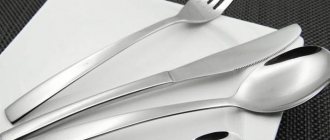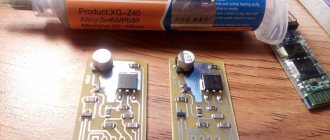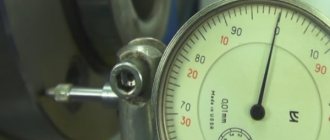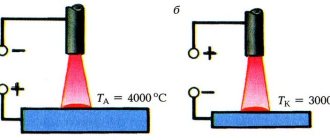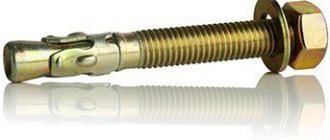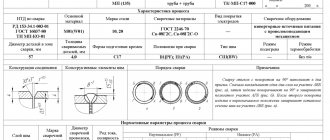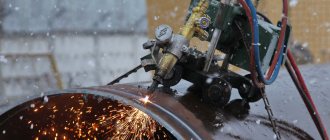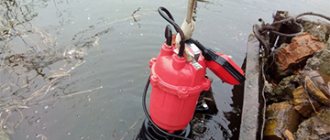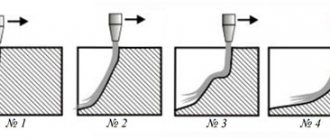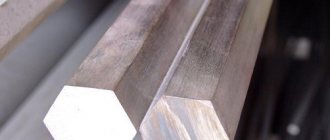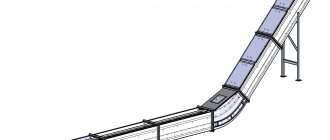Polishing agents are used for grinding and polishing metal, ceramic, plastic, stone or glass surfaces. In the CIS countries, the most widely used paste is GOI, developed by the USSR State Optical Institute in 1931-1933. The material is suitable for use at home and in production (in galvanizing shops).
Composition and varieties
Trivalent chromium oxide is used as an active component in GOI paste, which gives the material a green color. Additionally, binders and other additives are used: stearin, fat, oleic acid, kerosene, baking soda, silicate gel (silicon dioxide). The old formula used hexavalent chromium oxide, but it had to be abandoned because the substance causes cancer. It is not safe to use old paste of dubious origin.
The material is produced in the form of solid bars or a viscous mass supplied in jars. Available at any store that sells polishes. It is sometimes mistakenly called "goye" or "Goya paste". The use of trivalent chromium oxide makes up 60−85% of the substance. The color of the composition and the size of the granules (and, as a consequence, the abrasive characteristics) depend on the percentage of the active substance. A total of 4 types of polishing agents are produced:
- Rough (No. 4) . Used for grinding or rough polishing of surfaces. Easily removes the top layer of material, removes large scratches, irregularities, potholes, and risks. Contains 80−85% chromium oxide. Has a light green tint.
- Average (No. 3) . Used to give a matte finish to surfaces. Removes marks, minor irregularities, scratches. Up to 76% active substance, pure green tint.
- Thin (No. 2) . Used for polishing jewelry, metal, glass, and plastic products. Acceptable for finishing. The paste has a dark green tint and contains up to 74% chromium oxide.
- Thin (No. 1) . Used for finishing any surfaces. The only paste suitable for delicate materials. The dark mass with a green tint consists of 60-70% chromium oxide.
In production, thin pastes are used for grinding and final finishing of product surfaces. They are the ones who give shine and shine. At home, composition No. 2 is used for most work and materials.
History of pasta
This polishing agent was developed in our country a very long time ago - in the 30s of the twentieth century. It was invented by specialists from the State Optical Institute. Hence the name of the paste (based on the first letters) - GOI. For almost a hundred years, this product has been used to polish steel, other metals, ceramics, plastics, stone and even glass. Our grandfathers knew how to use GOI paste. Initially, it was made from chromium oxide and auxiliary substances and had a green color. Today, such a product can also be found in stores and on the market. However, the production of green pasta is currently prohibited and discontinued. The fact is that chromium oxide is a toxic carcinogen. Modern GOI pastes are white or red in color and are made from aluminum oxide. Using the second type, polishing is faster. Using white paste you can get a better and smoother surface.
Polishing rules
Polishing is done by wiping the surface with a soft rag with a paste applied to it. The rags are soaked in gasoline in advance (you can also take the contents of lighters). The material of the selected rag depends on the type of surface:
- Felt is used for metals.
- For stones, plastic, glass - cotton fabric (flannel). The more delicate the material, the softer the flannel.
- Steel knives and scissors are polished with a piece of leather mounted on a straightening board (board) or a stationary tabletop.
- Nickel and steel (except for knives and scissors) - with a special machine with attachments. When using power tools, the paste is applied to a polishing wheel.
Abrasive particles remove the top layer of the part along with irregularities and scratches. The coarser the abrasive, the greater the thickness of the removed layer.
Large particles can cause deep damage, so lumps must be broken up before polishing. To do this, wipe a rag with paste on an unnecessary surface before work.
Polish correctly using smooth movements. Strong pressure leads to the appearance of new scratches. Work is carried out until a smooth shiny surface is obtained. For deep damage, first grind the surface with a coarse paste, then use medium and fine compounds. You cannot immediately apply No. 2 and 1, otherwise the defects will become even more noticeable. Typically polishing parts takes 3-4 minutes.
The finished product is rinsed in kerosene or under running water, but it is not recommended to immediately place metal products under water. To slow down the oxidation process, metal surfaces are coated with tsapon varnish.
Jewelry, electronics
Products made of precious metals are polished only with soft cotton flannel and thin pastes, gold - only No. 1. Silver items are polished according to the standard algorithm, but before that they are cleaned according to the instructions:
- Silver is cleaned of dirt with an unnecessary toothbrush. Cleaning agent: tooth powder.
- Take an enamel bowl with water, add soap shavings, tooth powder and ammonia.
- The solution is stirred until smooth.
- Place silver into the solution and bring the liquid to a boil over low heat.
- Afterwards, the silver is removed from the vessel and washed in cold running water.
It is prohibited to use GOI paste when working with precious coatings - the polish wears away layers of gold, silver, chrome plating, etc. Before polishing mechanical watches and electronics, the working mechanisms and microcircuits must be removed from the case.
Glass, plastic
For polishing glass and plastics, only thin compounds and soft cotton rags are used. When working with plastic, the material is not wetted in gasoline; any remaining paste is removed with a dry cloth or dry paper napkin. Plastic surfaces do not need to be oiled. The glass is pre-treated with special rubber circles.
It is useless to polish sapphire glasses used to protect watches and small electronics with GOI paste - they cannot be polished with GOI paste.
How to use GOI paste
Each package comes with instructions that describe in detail the composition of the GOI paste, the rules for use in direct contact with certain hard surfaces to eliminate defects. Before starting use, you need to decide which paste will be relevant in a particular case. Several practical options predominate on free sale, among them the following numbers:
- No. 4. For rough processing.
- No. 3. To provide a matte surface without streaks.
- No. 2 and 1. To ensure glossy surfaces.
The procedure itself is not complicated, the main thing is to strictly follow the general recommendations and not damage the surface being treated. Polishing with GOI paste can be carried out in the following sequence:
- To avoid scratches on the surface being treated, you must first find a piece of cloth, such as flannel, and soak it in gasoline.
- Apply a small amount of paste to a rag, then wipe it on an unnecessary metal object to break up large crystals of the GOI composition.
- Rub the object with gentle movements until its body begins to shine. This cleaning takes a few minutes, but it is important to beware of large particles of Goya composition and scratches.
- After completing the session, you need to additionally treat the surface with gasoline or dip the polished object in kerosene.
For metal
Before polishing with GOI paste, it is important to decide on the type of metal. For example, there is often a need for high-quality cleaning of silver cutlery - forks, knives, spoons (over time they darken and turn green). In this case, it is important not to spoil the surface of the noble metal with small scratches, but to act in the sequence given below:
- Wash silver cutlery.
- Rub with a toothbrush and powder until shiny.
- Separately, pour water into a glass, add a little ammonia, soap, powder.
- Boil cutlery in this composition.
- Then proceed to metal processing with GOI composition.
If we talk about other metal bases and products, it is worth emphasizing that steel items are cleaned using a special device, and it is better to completely abandon cleaning gold in this way. This is explained by the fact that the top layer of this precious metal can be erased. When polishing a metal watch with paste, it is important to first remove the watch mechanism.
- How to properly prepare a ginger drink for weight loss
- Ureaplasmosis in women
- 10 Best Stretching Exercises for Beginners
For glass
For example, you may need to polish the display of a mobile phone or any other gadget. In this case, you definitely can’t do without this miraculous paste. When working with glass surfaces, it is recommended to use GOI composition No. 2, and additionally use a soft flannel rag. The cleaning process is available at home, the sequence of actions is as follows:
- Take a piece of rag and rub it thoroughly with a bar of technical product so that a layer of paste remains.
- After this, you can begin high-quality grinding of the glass, but do not put too much pressure on the fragile product.
- Without much effort, in just a few minutes the glass surface will be polished to a shine.
For plastic
For plastics, it is also recommended to use the GOI composition No. 2 with a viscous or solid consistency. Take a rag again and rub it with a bar or apply a thin layer of a gel-like paste. In the latter case, before proceeding with more intensive sanding of the plastic, it is important to rub any metal surface (to avoid scratches on the plastic). Then use the technical tool for its intended purpose in the same way as the examples described above.
Working with cars
GOI paste is used for grinding and polishing body parts, headlights, mirrors and car windows. The body is processed with a power tool with felt attachments, the windows and headlights are polished with flannel. The type of paste used depends on the planned work:
- The medium composition (No. 3) is used to polish body parts. After sanding, the surface appears matte and requires finishing.
- Fine compounds (No. 2 and 1) are used to polish body parts and glass elements.
To determine which operation to start body work with, you need to run your fingernail over the problem area. If the nail clings to scratches, then the body is first sanded and then polished. If the nail does not cling to the scratches, polish it immediately.
Before work, body parts are moistened with glass cleaner or water. The speed of the polishing wheel is from 1100 rpm. A circle is driven around the body without stopping, maintaining an angle of 4-6 degrees between the nozzle and the part. The remaining paste is removed with warm water under low pressure.
Before polishing mirrors, glass and headlights, surrounding parts are covered with plastic film. The elements to be treated are pre-washed with either a soap solution, a glass cleaner solution, or a solution of technical alcohol. After washing, wipe dry.
When working, use a machine with a grinding wheel or a drill with a special attachment. The paste is ground into powder and mixed with machine oil. One drop of oil is needed per spoon of powder. The mixture is applied to a grinding wheel and rubbed over the surface with overlapping stripes. During polishing, make sure that the product does not overheat. Remaining paste is removed with a paper towel. Deep scratches are not suitable for polishing; they are filled with a colorless leveling compound.
Polishing aluminum at home
To restore the characteristic shine of an aluminum surface at home, various folk methods and household chemicals are used.
Tools and devices
What you need to have on hand to get rid of scratches and dullness, and restore the original aesthetics of objects: for this, use a special paste for polishing aluminum. You can also deal with the problem using a number of common cleaning products and kitchen products, including:
- soap solution;
- glass and porcelain cleaning products;
- cream of tartar, table vinegar;
- baking soda, salt, lemon, alcohol;
- sorrel, sour apple, kefir.
In addition, you will need the following set of tools for polishing aluminum:
- fine and medium grit sandpaper;
- felt-coated polishing discs;
- metal brush;
- rags.
When choosing products and devices for polishing aluminum products at home, you should take into account the composition and characteristics of the material being processed. Food-grade aluminum should not be polished with abrasives; gentle methods for eliminating defects are appropriate here.
Pre-cleaning
If you plan to work with a painted part, at the initial stage of the procedure it is necessary to carry out preliminary cleaning, remove coating residues and oxidation particles. For this, various solvents and abrasives are used.
Tartar polishing
Cream of tartar solution copes well with darkening and deposits on metal:
- dissolve cream of tartar in a container of hot water, add lemon juice and bring to a boil;
- moisten a soft cloth in the cooled solution and wipe aluminum objects to a mirror shine.
Aluminum polishing can be done with cream of tartar
If cream of tartar is diluted with a small amount of water to a paste-like consistency, you can obtain an effective remedy for soot, oxidation and various contaminants on metal products.
Application of polish
As a special product for the care of aluminum products, polish has a number of advantages:
- helps quickly eliminate scratches and other visual defects;
- allows you to polish the aluminum surface to a mirror shine;
- does not contain ammonia and other aggressive substances;
- forms a protective layer, provides a barrier against oxidation.
Paste for polishing aluminum in Moscow and other regions is presented in a wide variety of products.
The nuances of using polish:
- The surface is pre-cleaned of paint coatings and dirt using a metal brush.
- Alternately, roughness is eliminated using medium and fine grain abrasives.
- After grinding, a paste is applied to the aluminum and rubbed in a circular motion using a rag until it has a reflective effect.
- Remains of the product are removed with a clean napkin.
To increase resistance to minor scratches and dirt, the surface is varnished after polishing.
Alternative remedies
The main competitors are diamond pastes and aluminum oxide pastes. They also vary in color according to their abrasive properties:
- Gray and red materials are used for grinding and rough polishing of metals. Some samples are capable of removing even deep risks.
- Pink ones are analogues of GOI paste No. 3. They remove traces of mechanical processing and create a shiny surface.
- White and turquoise compositions are intended for finishing and working with delicate surfaces.
Polishes are produced both in Russia and abroad: Gtool, Dialux, Rupes, Depural, Peek, Actuel. Foreign analogues are usually more expensive, but more effective and easier to use. They have lower consumption. Available in the form of bars, liquid mass or powder.
Protective polishing
To provide additional protection to the car body, you should use liquids or sprays that do not contain abrasive particles. They can be based on natural or synthetic components, such as paraffin and wax. These elements protect the stainless steel surface from aggressive environmental substances.
To maintain the level of mechanical protection of the car body, it is recommended to carry out the procedure once a month. Polishing agents are selected depending on the condition of the surface, type of metal and paint coating.
